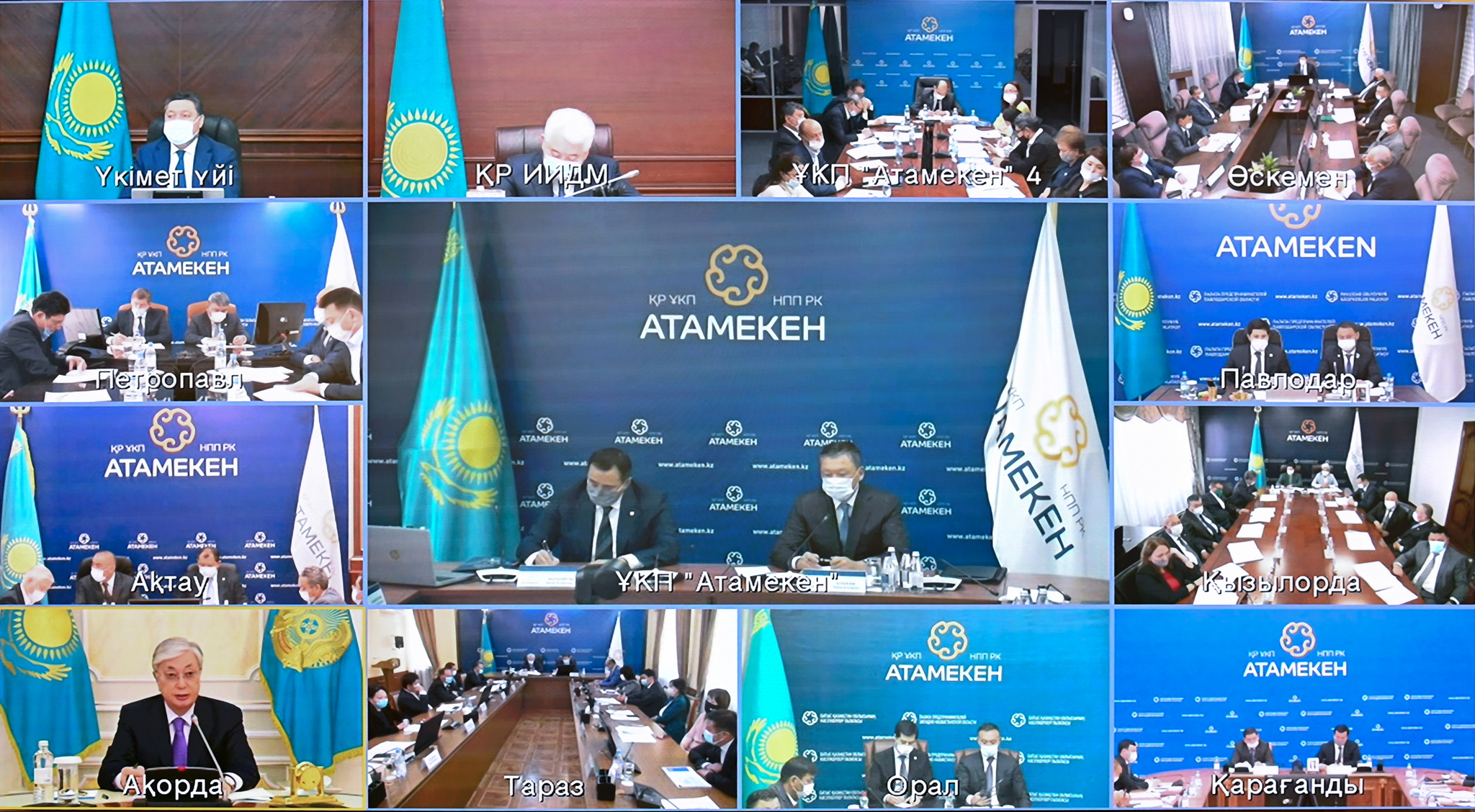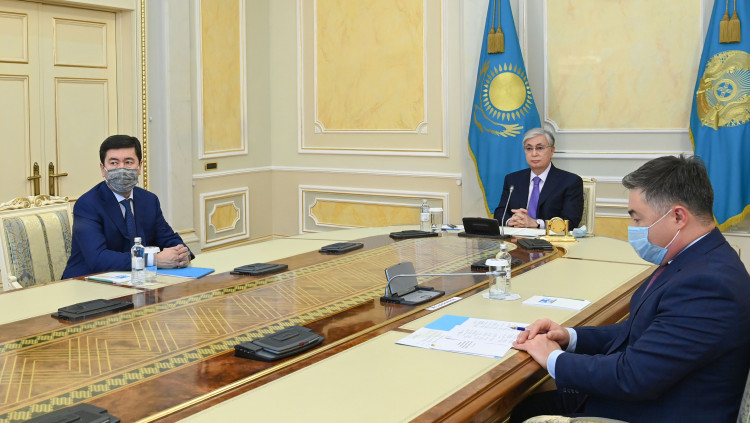NUR-SULTAN – The share of small and medium-sized businesses in the country’s gross domestic product has reached 32 percent with 3.5 million people, said Kazakh President Kassym-Jomart Tokayev during the eighth meeting of the Atameken National Chamber of Entrepreneurs on Tuesday.

During the virtual meeting. Photo credit: Akorda
The figure grew from 24 percent to 32 percent over the past five years. But the pandemic has disrupted the work of many businesses nationwide and to support them, the government adopted three packages of anti-crisis measures totaling 6.3 trillion tenge (US$14.8 billion).
“This allowed us to reverse the situation, restoring economic activity and entrepreneurial initiative. We have not allowed a sharp rise in unemployment and mass bankruptcies of enterprises. According to the results of the last eight months, our economy has grown by three percent and the state will continue to support business,” said Tokayev.
Kazakhstan has recently extended its business support programs through 2022 – the Economy of Simple Things and the Business Roadmap that will together receive one trillion tenge (US$2.3 billion) from the budget.
Businesses will also benefit from the ongoing vaccination efforts.
“I take this opportunity to tell the entrepreneurial community – business owners, management, and employees. We are talking about our country’s national security, the full launch of the economy, the restoration of citizens’ incomes, and most importantly, the health of our loved ones. Kazakhstan has effective, safe, and free vaccines at its disposal. I expect understanding and active actions from you,” said Tokayev.

From L to R: Presidential Administration Chief Yerlan Koshanov, Tokayev and Presidential Administration Deputy Chief Timur Suleimenov. Photo credit: Akorda
The number of medium-sized businesses should be increased, according to Tokayev, because, as he said, “it is they who are more stable and competitive.”
Businesses should also take advantage of digital technologies, as more than half of Kazakhstan’s jobs are already at high risk of automation.
“By 2030, almost a third of the workforce will be young people with digital skills and creativity. They need to be trained. The government, together with the Atameken, should identify long-term plans for training, and conduct the so-called forecast of competencies in the next 10 to 20 years,” said Tokayev.

